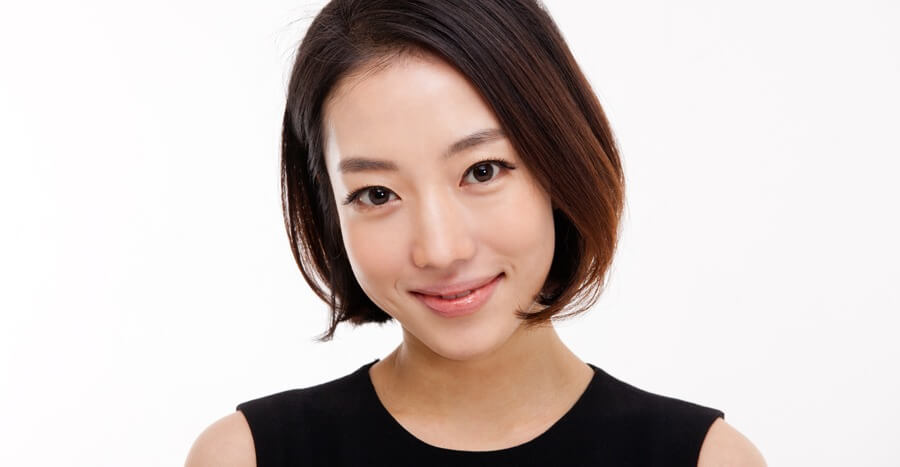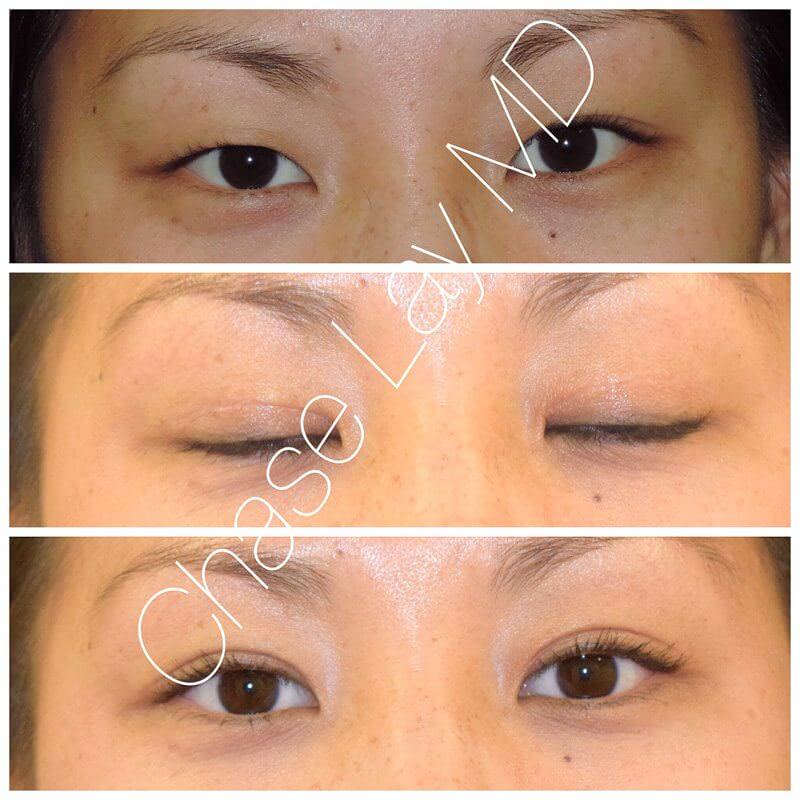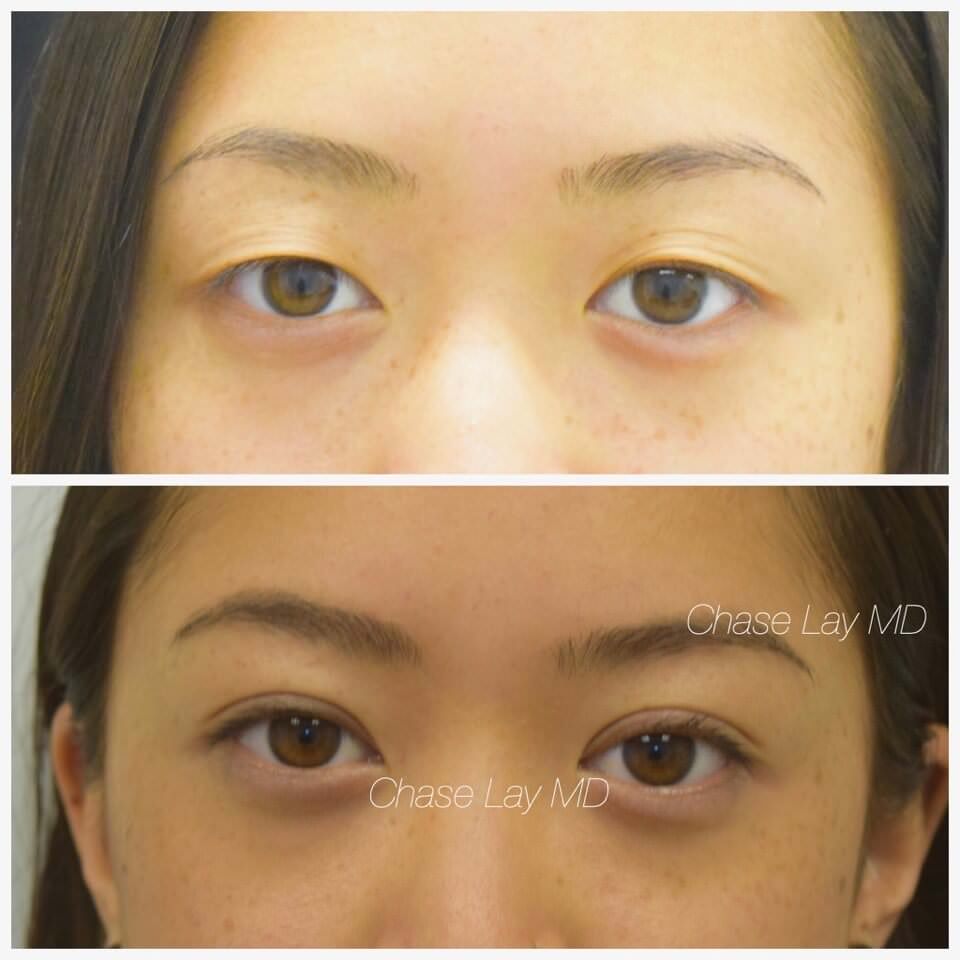See Before & After Photos
See actual results Dr. Lay has achieved and get a better sense of the possible outcomes following surgery.

View in ChineseA specialized procedure such as Asian eyelid surgery requires a facial plastic surgeon with unique skills and experience. Dr. Chase Lay has devoted much of his career to specializing in this procedure and he’s among the leading providers of Asian eyelid reconstructive surgery in the San Francisco Bay Area. Dr. Lay’s experience includes traveling to Vietnam and Thailand to refine his expertise.
Please request a consultation with Dr. Lay to learn more about Asian eyelid surgery, or call his San Jose practice at (408) 728-8887 to schedule an appointment.
See actual results Dr. Lay has achieved and get a better sense of the possible outcomes following surgery.
Surgery of the Asian eyelid has been performed literally for well over 100 years and was first well-documented in Japan before 1900. Also known as double eyelid surgery or Asian blepharoplasty, this surgery involves carefully reshaping the upper eyelid skin to create a more defined crease. Specialized surgical techniques are required to make visible changes to the crease and excess eyelid skin while maintaining a natural appearance that also maintains the patient’s personal and cultural identity. Some patients may even choose to receive only upper eyelid surgery to create a crease for a more open look or elect to have lower eyelid surgery to address any undereye bags.
The approach and goal of Asian double eyelid surgery is different from traditional blepharoplasty. Eyelid surgery for patients of Asian descent is a delicate procedure requiring detailed knowledge of Asian eyelid anatomy. Not only is the Asian eyelid anatomically distinct, but each patient’s eyelid anatomy poses unique surgical issues. Your anatomy, along with your skin tone and specific other cosmetic procedures and goals, will dictate the technique Dr. Lay uses for your surgery. The techniques fall into 2 general categories:
Asian Patients often ask about this approach because it is less invasive than techniques requiring incisions and typically has less swelling after the procedure. The disadvantage, however, is the crease created by the surgery is more likely to disappear over time. The suture technique for Asian eyelid surgery (double eyelid surgery) is a terrific technique with many advantages but must be used on the right patient with the right anatomy.
This isn’t a single technique, but rather a group of several specific techniques that all involve using an incision, or a set of small incisions, to perform upper eyelid surgery. These techniques are more invasive than the suture technique and require lengthier recuperation, but eyelid surgery using incisions is more predictable and longer-lasting. Swelling is usually completely gone within 5 to 7 days and all signs of that you had surgery disappear by 10 days.
“The best technique for your eyelid surgery may depend on whether or not you wear contacts. For example, a younger patient who doesn’t wear contacts and has thinner skin is a better candidate for the suture technique than someone older than 30 with thicker skin who wears contacts.”


Dr. Lay has seen his patients benefit from the Asian Eyelid Surgery in San Jose in the following ways:
Congenital upper-eyelid ptosis is an issue that is quite common among the Asian population. Good candidates for a San Jose Asian Eyelid Surgery should have the following characteristics:
Patients with a single eyelid (without a crease), low crease, asymmetrical creases (different in each eye), or double eyelid creases could benefit from Asian blepharoplasty. Older patients with excess skin hanging over the crease or obscuring their peripheral vision are also good candidates.
The first step in getting this surgery is to contact our office. During your appointment, you’ll be able to meet one-on-one with Dr. Chase Lay, who will complete a thorough evaluation of your eyelids, eye shape, and upper face to provide his expert recommendations and answer any questions you have. You should be as open and honest with Dr. Lay about your aesthetic desires and medical history, as great communication always leads to optimal results and prevents unnecessary risks.
If you’re happy with Dr. Lay’s recommendations, he will create your custom surgical plan and our Patient Coordinator will help you book your surgery. We will also provide pre and postoperative instructions which have been created to ensure patient safety and the best possible surgical outcome.
A simple double eyelid surgery using a suture-only procedure will typically result in mild swelling that lasts about 2 or 3 days. In many cases, you can return to work and regular activities within 12 to 24 hours. Avoid using contact lenses for 72 hours. There are no sutures to remove.
The procedure is performed under local anesthesia and can take anywhere from 30 minutes to one hour.
After your surgery, you will be monitored in our recovery room until you wake from sedation. Once released, you will be able to return home to recover in comfort, however, you will need a family member or friend available to drive you and stay with you for the first few days as you recover.
There will be some mild swelling and bruising that’s to be expected, but elevating your head and applying an ice pack can help to manage to swell and provide some relief. Surgery using incisions normally involves swelling that lasts for about 5 to 7 days, with the worst period about 2 to 3 days after the surgery. During your recovery, it is best to avoid applying makeup to the eyes, rubbing or stretching the eyelid tissues, or excessively cleaning the area, as these could compromise your results.
You will probably need to rest for at least 48 hours before returning to work and daily activities. Exercising or other strenuous activities require about 5 to 7 days of recuperation in most cases. The incision line typically fades about 2 weeks after the surgery and becomes much more difficult to see over the following weeks and months. The final suture will be removed about 6 or 7 days after the surgery, depending on the technique used.
The cost of Asian Eyelid Surgery in San Jose will vary on numerous factors, including the procedures performed, the techniques used, and the suture method, among other things. The best way to find out how much this procedure will cost you is to come in for a one-on-one consultation with Dr. Lay and allow him to examine your eye anatomy. After your surgical procedure plan is made, our Patient Coordinator will be able to provide you with a cost breakdown.
Dr. Chase Lay is a rare facial Facial Plastic Surgeon in the Bay Area located in San Jose who has performed more than 5,000 cosmetic and reconstructive procedures on the face and eyes with his primary focus being Asian Eyelid Surgery (sometimes referred to as Double Eyelid Surgery), fat transfer, and Asian Rhinoplasty. After receiving his medical degree at the University of Texas, Dr. Lay completed his residency in Head and Neck Surgery at Southern Illinois University. While there, he performed more than 1,500 functional, reconstructive, and cosmetic procedures on the face and in particular the eyes and periorbital area. The cornerstone of Dr. Lay’s plastic surgery philosophy is to improve your appearance while maintaining a natural look, which has been a guiding principle since he decided to focus on facial plastic surgery in general, while specializing in Asian Eye Surgery.
If your eyelids make it difficult to see or have a creaseless eyebrow that makes it difficult to apply makeup, Asian Eyelid Surgery in San Jose could be perfect for you. To schedule your initial consultation, contact our office today either through our website or by calling us directly. Dr. Lay has the technical skills required to perform the procedure and can provide you with the beautiful and natural-looking results you’re in search of.
Regardless of your reason to undergo blepharoplasty, an experienced surgeon Dr. Chase Lay will have you looking and seeing better than ever before.
After these initial check-ups, Dr. Lay will want to see you a few more times over the next six months to monitor your recovery and take “after” photos.
Most of these side effects will be able to heal on their own over a few days to a few weeks, but if you experience any concerning or long-lasting reactions, please contact our office immediately.